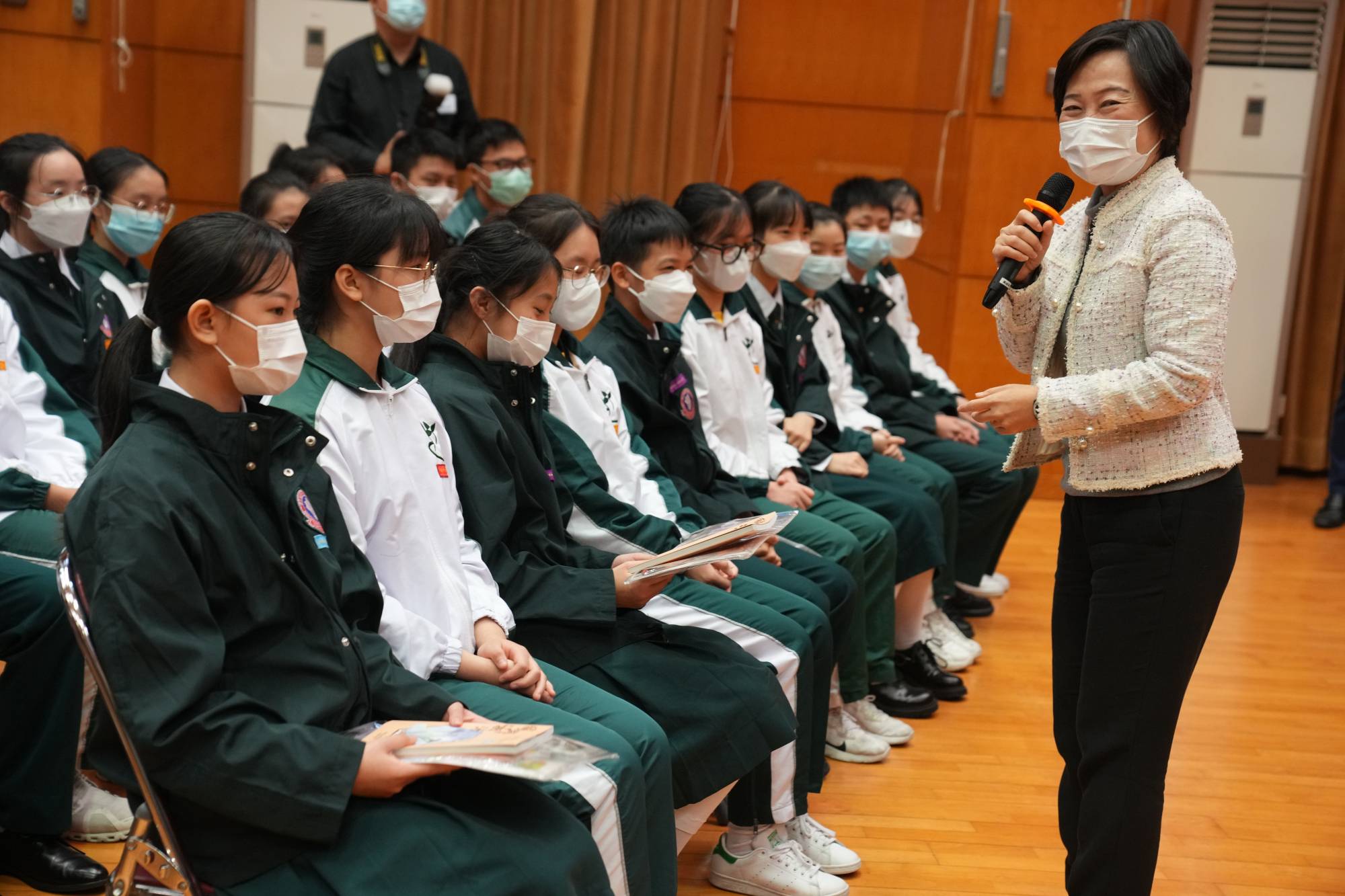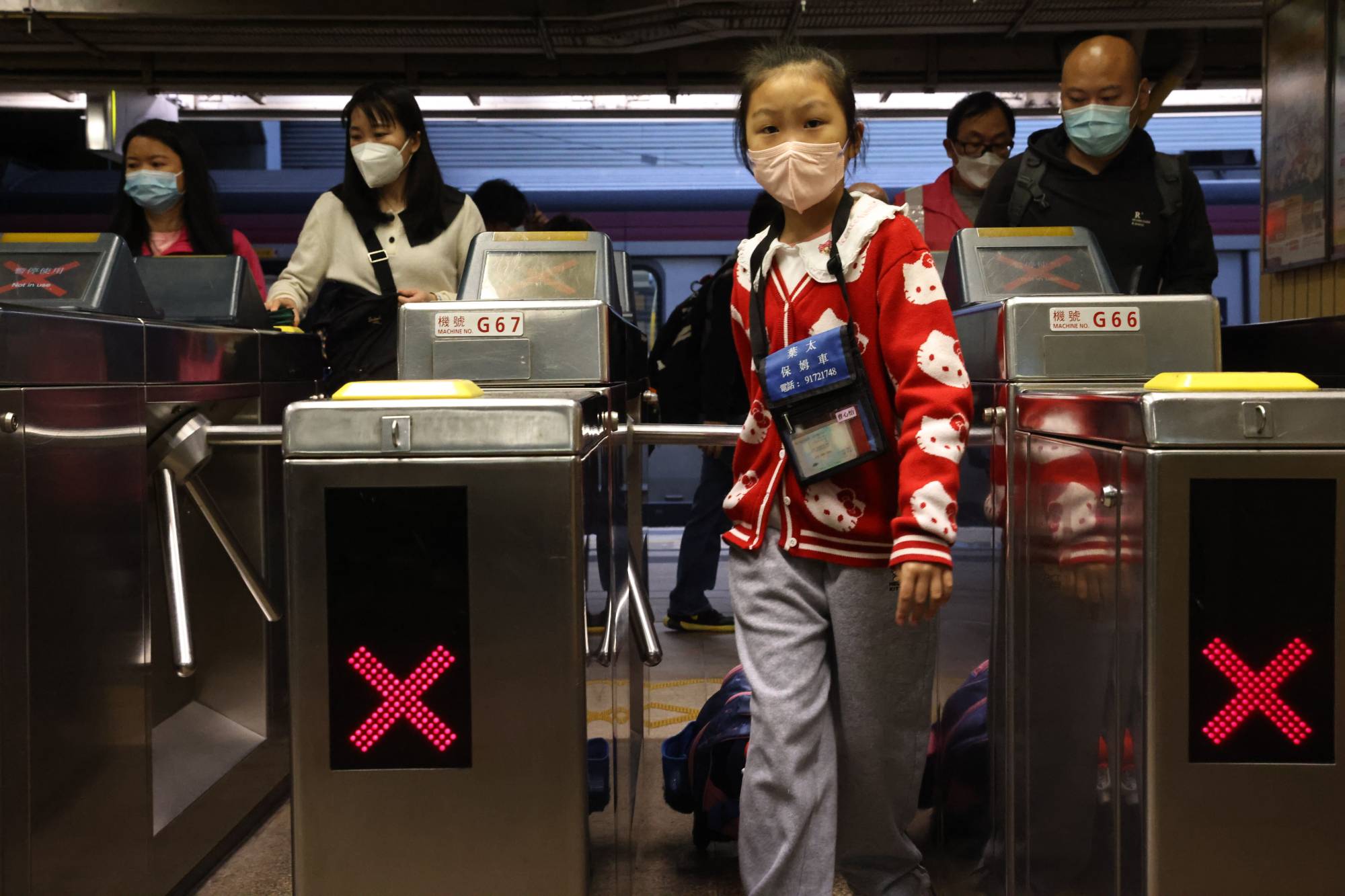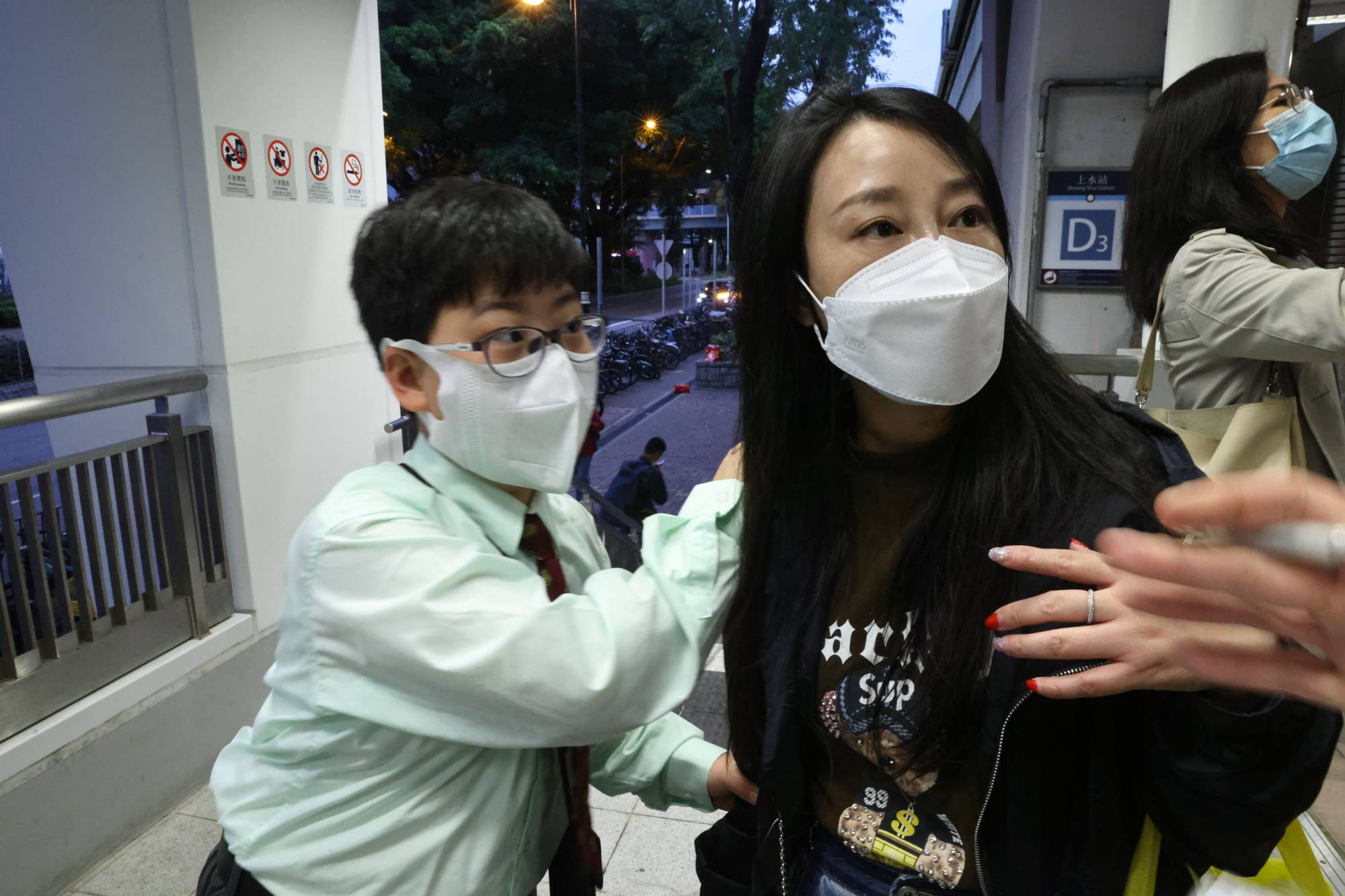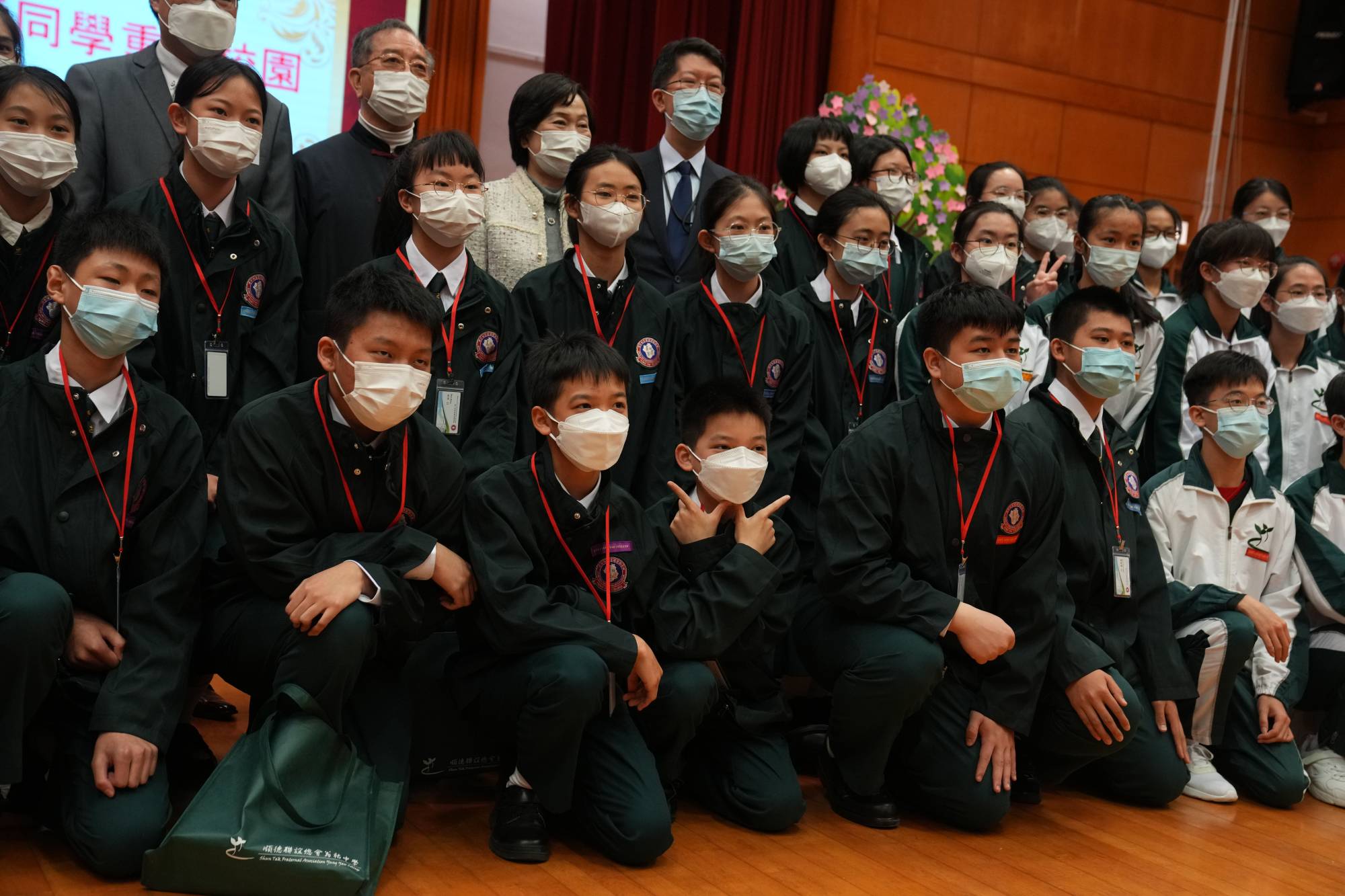
Hong Kong welcomes back cross-border students as parents, children hail eased rules with special travel path at checkpoints
- Secondary school students are the first batch officially allowed to resume classes, with many having attended online sessions on the mainland for three years
- There are currently nearly 21,000 cross-border students in Hong Kong, comprising 7,000 in secondary, 13,000 in primary and 900 in kindergartens
Hong Kong officially welcomed back cross-border students for full-day, in-person classes on Wednesday amid a total resumption of travel between both sides, marking an end to three years of online lessons.
The border between the city and mainland China fully reopened on Monday, with Hong Kong education minister Christine Choi Yuk-lin saying she was confident all students could return by February 22.
“According to my observations at the immigration checkpoint this morning, the arrangements were very smooth,” Choi told reporters after a visit to Shun Tak Fraternal Association Yung Yau College in Tin Shui Wai.
The education secretary added that authorities would review the need for daily negative rapid antigen tests (RAT) in schools at the end of the month.
Hong Kong cross-border students return after 3-year hiatus, ahead of official date
Chief Secretary Chan Kwok-ki on Tuesday revealed the government was in discussion with the mainland to simplify or even cancel the health declaration procedure at checkpoints.
Choi had earlier said cross-border students – the first batch being those at the secondary level – could return to school two days after the border reopening as authorities had expected land crossings to be busy, setting aside more time for students to renew their immigration documents.

Primary school and kindergarten pupils can officially return to school in the city on February 22.
While some students have opted to return before the stipulated date, those travelling from Wednesday can use a designated passageway at checkpoints to avoid long queues.
Cross-border school bus services have yet to fully resume, with the Education Bureau saying it was still handling licence applications from operators.

At the border town of Sheung Shui in Hong Kong, hundreds of students and their parents streamed out of the MTR station at around 7am. Several queues formed at a nearby bus station where students lined up for public transport to their schools.
“The dedicated passageway for cross-border students has opened, and we don’t have to provide a negative polymerase chain reaction (PCR) test result now. The process of crossing the border has become very simple,” Zhu Kuan, a 13-year-old in Form One at Tuen Mun Catholic Secondary School said.
“I came back to study in school last week,” he added, noting the crossing time was halved on Wednesday to about 25 minutes with the new measures.
“I was excited to return to school,” said the teen, who has spent most of his primary school life online. “My friends on the mainland have gone back to school one by one, and I was the only one taking classes online.”
Return of cross-border pupils to Hong Kong classrooms delayed by 2 weeks
Ngai Tak-keung, a Form Three student at De La Salle Secondary School in Kwu Tung, woke up at 5am for the first time in three years for his commute to Hong Kong. “I am extremely happy to see my friends again. I have never seen my classmates since secondary school. This time, my wish has finally come true.”
The boy, who lives in Dongguan, took a 50-minute taxi ride from the mainland city to the Lo Wu border checkpoint for the first train into the city.
“Finally, I will be able to take PE classes, play basketball, and relearn things I couldn’t hear in online classes,” Ngai said. “It is a forgotten experience that I’m really looking forward to.”

For some parents, their children’s return to school was also a huge relief.
“My heart is finally at ease now that I can see my child returning to study in Hong Kong,” said Chen Xingfang, a 49-year-old mother said with a son at Tuen Mun Catholic Secondary School.
Chen, who lives in Futian, Shenzhen, woke up at 5.40am to prepare her child for the journey. “Starting this week, no PCR test is required, crossing the border for children has become very convenient,” she noted.
At the height of the pandemic, the mother chose to transfer her son to a private primary and a public secondary school in Shenzhen for two years to continue in-person classes. She said she was surrounded by parents of cross-border students who made the same decision.
“To be honest, my son has got used to school life on the mainland, but we decided to send him back to Hong Kong,” Chen said. “In Hong Kong, he has a better chance of going to a top university and less pressure.”
Cross-border parents urge Hong Kong to reopen Lo Wu checkpoint for students
Tina Qu, on the other hand, chose to let her son study online for three years out of his five-year primary school life. But the struggle is finally over.
“There is nothing I need to do now,” Qu, who spent under 30 minutes crossing the border, said of the procedures. “All I need is to fill a ‘black code’, which is a health declaration. This can be done in no time.
“He was just in primary school when the pandemic began and now he’s almost as tall as me,” Qu said of her son, lamenting that the boy had to wear glasses now because of all the screen time spent on online lessons.
“I am really happy my son can finally experience school life,” she added. “We have been waiting for too long.”

There are currently nearly 21,000 cross-border students in Hong Kong, comprising 7,000 in secondary, 13,000 in primary and 900 in kindergartens.
Most of them hail from Shenzhen, with only a quarter having stayed in Hong Kong during the pandemic, while others remained with families on the mainland and attended classes online for the past three years.
Students at the Tin Shui Wai school who crossed the border said they were glad to be back, but nervous about catching up academically.
Form Five student Manson Wen Chiu-fung, 16, said he felt happy and nervous at the same time. “I’ve missed my friends and teachers the most, as we only had limited contact on WeChat over the past three years.
“But I’m worried about not being able to catch up or answer teachers’ questions.”
Alan Liao Jun-hao, who stepped onto campus for the first time to begin his secondary education on Wednesday, was marvelling at the size of his school and said he could not sleep the previous night because he was too excited.
But the 12-year-old still felt wistful about missing his primary school graduation due to pandemic restrictions. “I was photoshopped into graduation photos. I wish I could have been there instead.”

Joan Tam Chong-ling, vice principal of Shun Tak Fraternal Association Yung Yau College, said cross-border students had been joining school activities remotely for the past three years but would need help re-establishing relationships with peers upon returning.
“Cross-border students can get quite nervous when returning to school as they might feel distant from their classmates. However, their relationships have greatly improved after some ice-breaker activities,” Tam said.
The secondary school has also organised a one-on-one buddy programme catered to cross-border students’ academic and social needs, with details reported back to teachers for additional support.
Yau Chi-leung, principal of Yuen Long Merchants Association Secondary School, said about 50 cross-border students had returned to campus on Wednesday, adding the school would provide support for them to adjust to their new routines.
“Some students do not have school uniforms and some of them were late for school because of traffic arrangements, but we will handle the issues with leniency so that they can join classes at ease,” Yau told a radio programme on Wednesday.
He added the school had matched cross-border students in lower form with peer counsellors to help them adjust to campus life, and teachers would also pay special attention to their study needs.

Wong Ching-hong, president of a parents’ association representing cross-border students, raised concern over the complexity of the health declaration, especially for younger students.
“Some parents who have not yet obtained family visit permits are not able to take their children to schools. They need to fill in the health declaration and send it to their children’s mobile phone, but it’s not very good for kids who are too young to bring phones,” Wong noted.
Wong said she had requested checkpoint officials to allow younger students to submit paper declarations.
Additional reporting by Oscar Liu


